The Ampere Altra Review: 2x 80 Cores Arm Server Performance Monster
by Andrei Frumusanu on December 18, 2020 6:00 AM EST- Posted in
- Servers
- Neoverse N1
- Ampere
- Altra
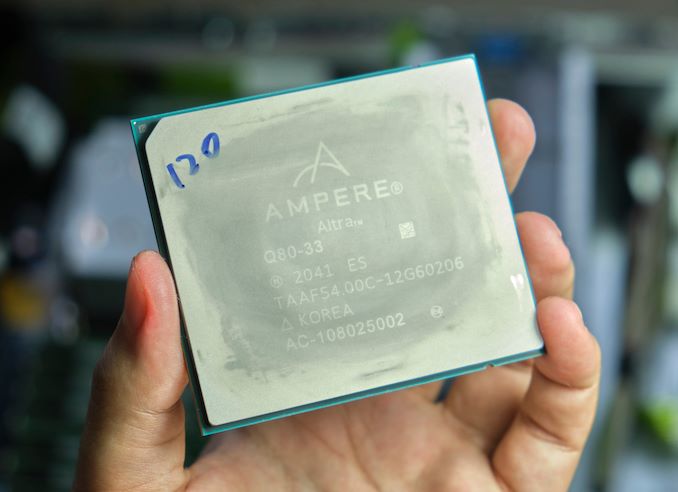
As we’re wrapping up 2020, one last large review item for the year is Ampere’s long promised new Altra Arm server processor. This year has indeed been the year where Arm servers have had a breakthrough; Arm’s new Neoverse-N1 CPU core had been the IP designer’s first true dedicated server core, promising focused performance and efficiency for the datacentre.
Earlier in the year we had the chance to test out the first Neoverse-N1 silicon in the form of Amazon’s Graviton2 inside of AWS EC2 cloud compute offering. The Graviton2 seemed like a very impressive design, but was rather conservative in its goals, and it’s also a piece of hardware that the general public cannot access outside of Amazon’s own cloud services.
Ampere Computing, founded in 2017 by former Intel president Renée James, built upon initial IP and design talent of AppliedMicro’s X-Gene CPUs, and with Arm Holdings becoming an investor in 2019, is at this moment in time the sole “true” merchant silicon vendor designing and offering up Neoverse-N1 server designs.
To date, the company has had a few products out in the form of the eMAG chips, but with rather disappointing performance figures - understandable given that those were essentially legacy products based on the old X-Gene microarchitecture.
Ampere’s new Altra product line, on the other hand is the culmination of several years of work and close collaboration with Arm – and the company first “true” product which can be viewed as Ampere pedigree.
Today, with hardware in hand, we’re finally taking a look at the very first publicly available high-performance Neoverse based Arm server hardware, designed for nothing less than maximum achievable performance, aiming to battle the best designs from Intel and AMD.
Mount Jade Server with Altra Quicksilver
Ampere has supplied us with the company’s server reference design, dubbed “Mount Jade”, a 2-socket 2U rack unit sever. The server came supplied with two Altra Q80-33 processors, Ampere’s top-of-the-line SKU with each featuring 80 cores running at up to 3.3GHz, with TDP reaching up to 250W per socket.
The server was designed with close collaboration with Wiwynn for this dual socket, and with GIGABYTE for the single socket variant, as previously hinted by the two company’s announcements of leading hyperscale deployments of the Altra platforms. The Ampere-branded Mount Jade DVT reference motherboard comes in a typical server blue colour scheme and features 2 sockets with up to 16 DIMM slots per socket, reaching up to 4TB DRAM capacity per socket, although our review unit came equipped with 256GB per socket across 8 DIMMs to fully populate the chip’s 8-channel memory controllers.
This is also our first look at Ampere’s first-generation socket design. The company doesn’t really market any particular name to the socket, but it’s a massive LGA4926 socket with a pin-count in excess of any other commercial server socket from AMD or Intel. The holding mechanism is somewhat similar to that of AMD’s SP3 system, with a holding mechanism tensioned by a 5-point screw system.
The chip itself is absolutely humongous and amongst the current publicly available processors is the biggest in the industry, out-sizing AMD’s SP3 form-factor packaging, coming in at around 77 x 66.8mm – about the same length but considerably wider than AMD’s counterparts.
Although it’s a massive chip with a huge IHS, the Mount Jade server surprised me with its cooling solution as the included 250W type cooler only made contact with about 1/4th the surface area of the heat spreader.
Ampere here doesn’t have a recessed “lip” around the IHS for the mounting bracket to hold onto the chip like on AMD or Intel systems, so the actual IHS surface is actually recessed in relation to the bracket which means you cannot have a flat surface cooler design across the whole of the chip surface.
Instead, the included 250W design cooler uses a huge vapour chamber design with a “pedestal” to make contact with the chip. Ampere explains that they’ve experimented with different designs and found that a smaller area pedestal actually worked better for heat dissipation – siphoning heat off from the actual chip die which is notably smaller than the IHS and chip package.
The cooler design is quite complex, with vertical fin stacks dissipating heat directly off the vapour chamber, with additional large horizontal fins dissipating heat from 6 U-shaped heat pipes that draw heat from the vapour chamber. It’s definitely a more complex and high-end design than what we’re used to in server coolers.
Although the Mount Jade server is definitely a very interesting piece of hardware, our focus today lies around the actual new Altra processors themselves, so let’s dive into the new Q80-33 80-core chip next.


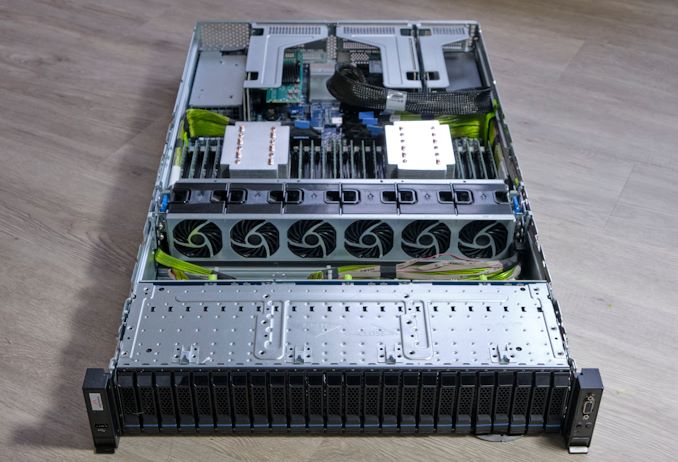
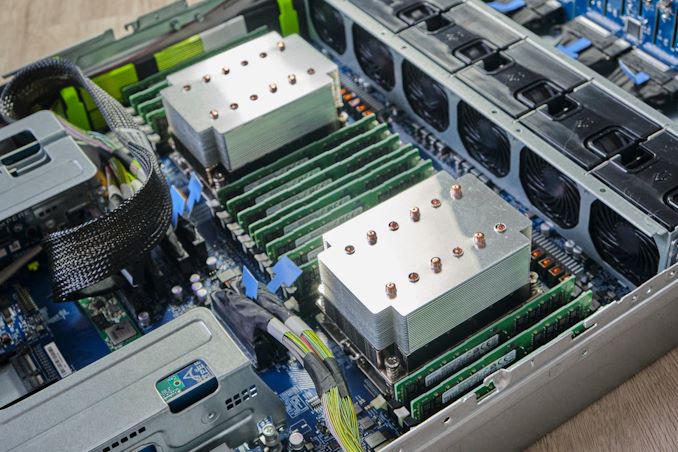
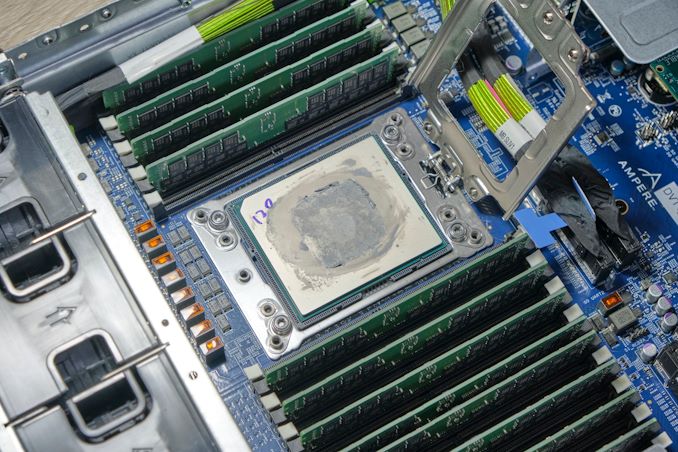
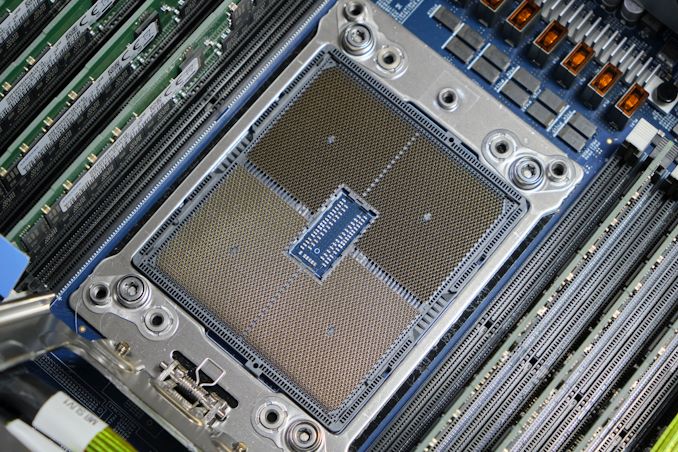
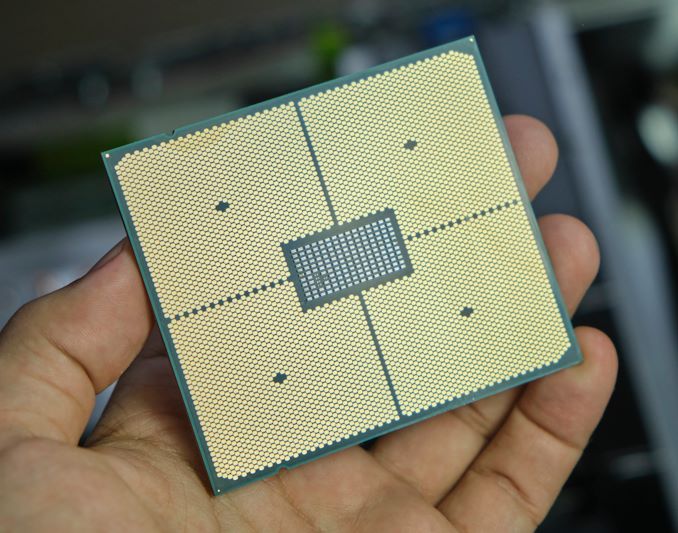

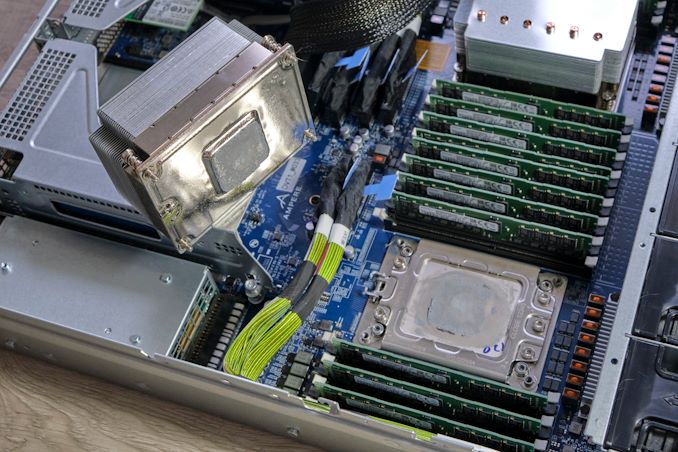
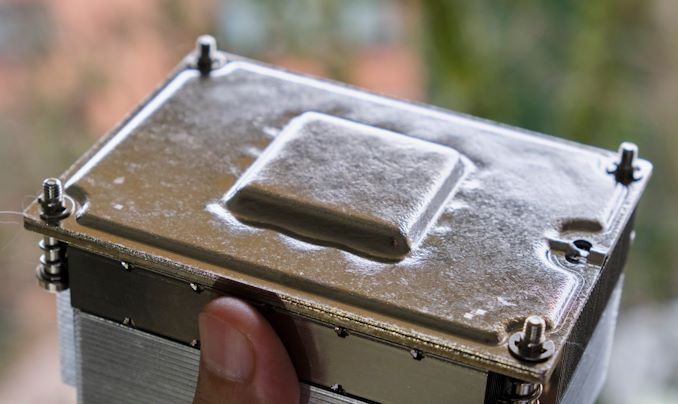
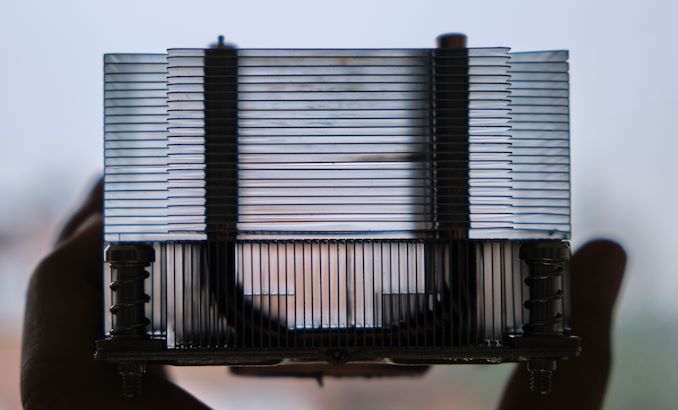








148 Comments
View All Comments
Silver5urfer - Friday, December 18, 2020 - link
25% more cores for Zen2 7742 class. If paired with multi socket and then Milan drop in this is not going to be any major breakthrough."The Arm server dream is no longer a dream, it’s here today, and it’s real." lol so until today all the articles on the ARM are not real I guess.
Anyways I will wait for market penetration of this with server share and then see how great ARM is and how bad x86 is going to be as from AT's narrative recently.
Spunjji - Monday, December 21, 2020 - link
Are you this mopey every time there's a paradigm-shift in the tech industry? Feel free to keep looking for metrics that "prove" you right, but eventually it's going to be a very hard search.eastcoast_pete - Friday, December 18, 2020 - link
Thanks Andrei! Maybe I am barking up the wrong tree here, but I find the "baby" server chip in that lineup particularly interesting. Nowhere near as fast as this, of course, but for $ 800, it might make for a nice CPU for a basic server setup; nothing fancy, but low TdP, and would probably get the job done. The question here is how expensive the MB for those would be.Lastly, if Ampere sends you one of those $ 800 ones, could/would you test it?
Wilco1 - Friday, December 18, 2020 - link
They will likely sell desktops using these just like the previous generation, but they are not cheap as it is high-end server gear using expensive ECC memory (and lots of it since there are 8 channels). If you don't need the fastest then there is eg. NVIDIA Xavier or LX2160A (16x A72) boards for around $500.Spunjji - Monday, December 21, 2020 - link
I think those are probably most useful for workloads that are pathologically memory and/or I/O limited - 4TB per socket, save ~$3000 over the faster CPU, benefit from power savings over the life of the server.twtech - Friday, December 18, 2020 - link
Ironically, AMD's opportunity to win might turn into an ultimate loss - Intel's manufacturing advantage kept x86 relevant, and with access to the x86 instruction set limited by ownership of the IP, AMD lived alongside Intel in that walled garden.With the manufacturing advantage gone however, Apple has left the garden, and maybe other personal computers won't be far behind - software compatibility I think is actually less of an issue in the era of SaaS and continuous updates. Ie. you were going to have to download new versions of the software you use as time went on anyway.
FunBunny2 - Friday, December 18, 2020 - link
"you were going to have to download new versions of the software you use as time went on anyway."Solar Wind? :)
lorribot - Friday, December 18, 2020 - link
This is all great but when all licencing is per core it limits the usage scenarios or benefits of these developments as they can really only be used with open source type licences.For the rest of us on Windows, Oracle, Java, Apple, IBM, etc licencing it doesn't bring anything to the table.
The_Assimilator - Friday, December 18, 2020 - link
Just in time to be obsoleted by Milan.Spunjji - Monday, December 21, 2020 - link
For a given definition of "obsoleted", where it means "still more than competitive in performance per dollar at a lower price of entry".